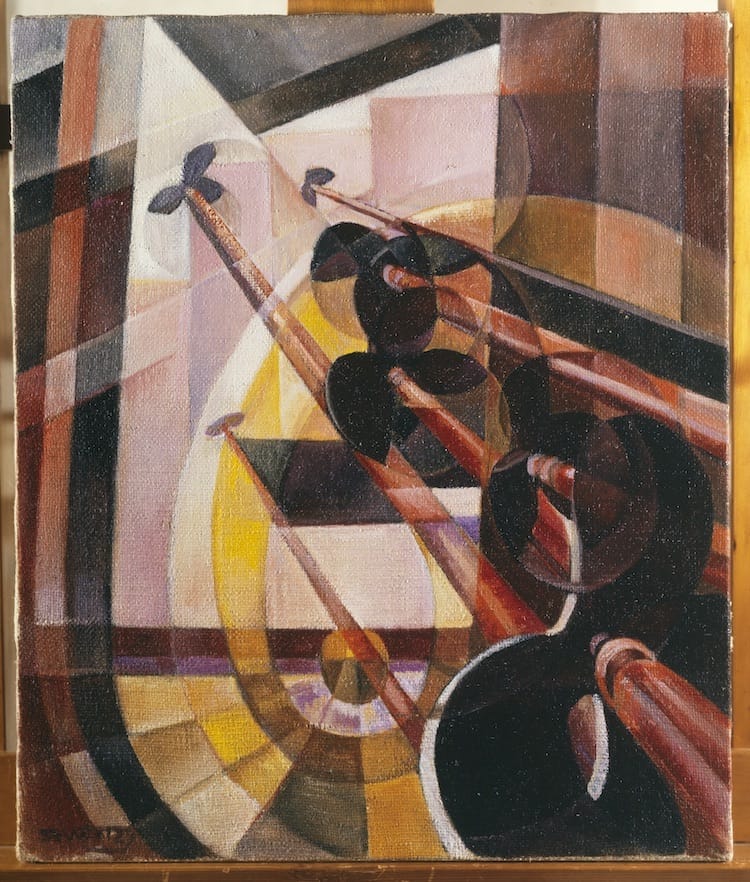What’s the best way to tell area residents about plans for a new asylum shelter nearby?
The government should tell communities directly about plans for new asylum shelters, some activists and politicians say.
Sean Kissane is searching for some of the artist’s early paintings for an upcoming show at the Irish Museum of Modern Art.

Sean Kissane is on a mission in search of missing art.
He’s putting on a major retrospective of the artist Mary Swanzy this October at the Irish Museum of Modern Art (IMMA) in Kilmainham.
But there are gaps he wants to fill, major early works from the artist, who was perhaps best known for her cubist style. “These paintings are hanging on somebody’s wall,” Kissane says.
The exhibition, Mary Swanzy: Modern Irish Master, will examine the life and work of one of Ireland’s first modernist painters, who lived from 1882 to 1978.
In her earlier years, Swanzy worked as a formal portrait artist in Dublin, says Kissane, a curator at IMMA. Later, she adopted modernist styes: fauvism, cubism, orphism.
He is trying to track down six of these early oil portraits of neighbours and friends. From records of a 1968 Swanzy retrospective at the Hugh Lane Gallery, he knows they exist.
There were paintings of T.A. Denham, Mrs Knox Denham, William Daly, Reverend David Purvis, W. Kingsley Tarpey, and Mrs Parker.
“The difficulty is that these would have been commissioned by these families and, presumably, are still owned by these families,” says Kissane. “I’ve tried going through the phone book. But, actually, that rarely turns up anything.”

Several works painted by the artist during a stay on Samoa in the early 1920s are also on Kissane’s wish list. “In 1920, she sailed from Ireland to Hawaii, where her cousin was involved in the government there,” he says.
Twenty years earlier, French artist Paul Gauguin had painted his now-iconic images of Polynesia and the people who lived there.
While Gauguin’s depictions of women he met in the region were sexualised, Swanzy’s Samoan works took a different approach, says curator Kissane. “What you get is much more a sense of individuals.”
She painted images of people working against a backdrop of colourful foliage. She also depicted colonial life on the island, Kissane says. “So she’s extremely aware of the contrast between the two worlds.”
So far, Kissane has chased down eight of Swanzy’s paintings of Samoa. But there are 30 in total, he says.
Several of them were hung in an exhibition held at the now-closed Dawson Gallery in Dublin in 1971. But there don’t seem to be records of who bought the paintings at the time, Kissane says.
“There are at least 12 more kicking around, probably, Dublin,” he says.
Kissane says he wants to gather a more comprehensive record of Swanzy’s work, partly because – as his search proves – not all her paintings are easy to track. “It’s actually very hard to research somebody like Mary Swanzy,” he says.
Swanzy didn’t date her work and she slipped back and forth between styles, says Liz Cullinane, an artist who is working with Kissane on the restrospective.
“She has done everything possible to make things difficult. She also didn’t like titling her work,” says Cullinane, who is working on a biography of Swanzy.

Cullinane has “trawled” records for years, trying to glean a picture of Swanzy’s life. She “wasn’t allowed…to do any (First World War) work when her sister volunteered in Czechoslovakia, on medical grounds”, says Cullinane.
She spent much of her early life expecting not to live long, as revealed in a 1970s radio interview, although it’s unclear why, says Cullinane.
This could be what drove her to create thousands of artworks over a career of seven decades, says Cullinane. “Her work rate was phenomenal.”
She had 15 solo exhibitions before she died at the age of 96 in 1978. “That’s an amazing achievement,” says Cullinane.
While Swanzy lived and worked in London for 50 years – selling paintings from home – none of the major British collections have her paintings, says Cullinane.
Swanzy is best best known for her cubist work, but it’s her Samoan paintings which are key to any retrospective, she says.
“They’re essential to her use of colour,” Cullinane says. “She actually only spent a month in Samoa in total, but the volume of work that she produced during that time is quite extraordinary.”
They are a testament to Swanzy’s talent and drive, she says. “For a woman to do that on her own at that time, unchaperoned, is a mark of her determination and of her independence.”
Kissane is unsure whether he and Cullinane will manage to track down more of the paintings before the opening on 26 October, to add to the 50 they have in hand.
“It’s a century ago, though. So it’s unlikely we’ll necessarily find them,” he says. “But because they form such a contrast to her cubist work, it’s really important for a retrospective to see that.”
Got a Mary Swanzy above your mantlepiece or in your attic? You can reach Sean Kissane on seankissane@imma.ie.